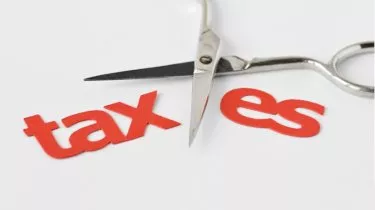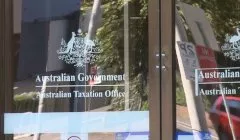Earn
How does the expanded low and middle income tax offset work?
Millions of taxpayers will receive hundreds of dollars more in their tax return this year.
How does the expanded low and middle income tax offset work?
Millions of taxpayers will receive hundreds of dollars more in their tax return this year.

More than ten million Aussie workers will receive an extra tax offset of $420 for the current financial year through an increase to the low and middle income tax offset (LMITO).
Under the LMITO, workers with a taxable income of between $48,001 and $90,000 have received a tax offset of $1,080 each financial year since 2018-19.
Combined with the increase of $420 announced in the latest budget, the maximum LMITO benefit for 2021-22 will rise to $1,500 for individuals and $3,000 for couples.
In its budget papers released on Tuesday, the government said that the LMITO was targeted at low and middle income earners that are most susceptible to cost-of-living pressures.

“The government is responding in a temporary, targeted and responsible way to reduce cost of living pressures experienced by Australian households,” it said.
All LMITO recipients will receive the full $420 increase, including those earning less than $48,001 or between $90,001 and $126,000 who do not receive the full $1,080 tax offset.
“All other features of the current LMITO remain unchanged,” the government explained.
“Consistent with the current LMITO, taxpayers with incomes of $126,000 or more will not receive the additional $420.”
H&R Block director of tax communications Mark Chapman welcomed the expanded offset, but noted that the measure would only remain in place over the short term.
“Next year, the low and middle-income tax offset disappears completely - meaning that people earning up to $126,000 will see a tax rise of up to $1,080. It's hard to see how that will do anything to help cost of living pressures over the medium and long term,” he said.
“Worse, just as most Australians will see this tax rise, the wealthiest Australians will be anticipating a tax cut of up to $9,075 in 2024-25.”
The boost to the LMITO is expected to cost $4.1 billion according to budget estimates and a total of 4.8 million Aussies will receive the full $1,500 offset.
$250 cost-of-living payment
Furthermore, the government also unveiled a $250 cost-of-living payment that will be delivered to six million Australians next month.
“Pensioners, carers, veterans, job seekers, eligible self‑funded retirees and concession card holders will benefit,” Treasurer Josh Frydenberg said in his budget speech on Tuesday.
“Together, with existing indexation arrangements, this will see a single pensioner receive more than $500 in additional support over the next 6 months, just when they need it most.”
The one-off $250 cost of living payment will be tax exempt and will be paid automatically to all eligible pensioners, welfare recipients, veterans and eligible concession card holders in April.
Recipients of the following payments will be eligible for the payment:
- Age Pension
- Disability Support Pension
- Parenting Payment
- Carer Payment
- Carer Allowance (if not in receipt of a primary income support payment)
- Jobseeker Payment
- Youth Allowance
- Austudy and Abstudy Living Allowance
- Double Orphan Pension
- Special Benefit
- Farm Household Allowance
- Pensioner Concession Card (PCC) holders
- Commonwealth Seniors Health Card holders
- Eligible Veterans’ Affairs payment recipients and Veteran Gold card holders

Tax refund
How a $140k 'repair' became a tax strategy triumph and competitive edge
A Sydney investor secured an immediate deduction for $140,000 in rental property works after the ATO initially treated the spend as capital. In a market where the ATO says most rental schedules ...Read more

Tax refund
The ATO will be focusing on these four issues at tax time
The tax office has indicated it will be scrutinising areas where taxpayers are known to make mistakes. Read more

Tax refund
More than half of Aussies get stressed at tax time, survey finds
Many taxpayers feel that they may be missing out on deductions in their tax returns. Read more

Tax refund
Engage or face firmer action, ATO warns taxpayers with unpaid debts
The tax office is offering support and assistance to those with overdue debts. Read more

Tax refund
How to prepare for your tax return
While the end of the financial year is still a couple of months away, you can take action now to help maximise your tax return. Read more

Tax refund
What issues will be on the ATO’s radar this year?
H&R Block has outlined two main areas that the tax office is expected to focus on. Read more

Tax refund
Why 90% of taxpayers could face a higher tax bill next financial year
A tax offset for over 10 million Aussies may not be extended in next month’s budget. Read more

Tax refund
PM ponders extension of low and middle income tax offset
Scott Morrison has hinted that a popular tax-saving measure may return in 2022. Read more

Tax refund
How a $140k 'repair' became a tax strategy triumph and competitive edge
A Sydney investor secured an immediate deduction for $140,000 in rental property works after the ATO initially treated the spend as capital. In a market where the ATO says most rental schedules ...Read more

Tax refund
The ATO will be focusing on these four issues at tax time
The tax office has indicated it will be scrutinising areas where taxpayers are known to make mistakes. Read more

Tax refund
More than half of Aussies get stressed at tax time, survey finds
Many taxpayers feel that they may be missing out on deductions in their tax returns. Read more

Tax refund
Engage or face firmer action, ATO warns taxpayers with unpaid debts
The tax office is offering support and assistance to those with overdue debts. Read more

Tax refund
How to prepare for your tax return
While the end of the financial year is still a couple of months away, you can take action now to help maximise your tax return. Read more

Tax refund
What issues will be on the ATO’s radar this year?
H&R Block has outlined two main areas that the tax office is expected to focus on. Read more

Tax refund
Why 90% of taxpayers could face a higher tax bill next financial year
A tax offset for over 10 million Aussies may not be extended in next month’s budget. Read more

Tax refund
PM ponders extension of low and middle income tax offset
Scott Morrison has hinted that a popular tax-saving measure may return in 2022. Read more










